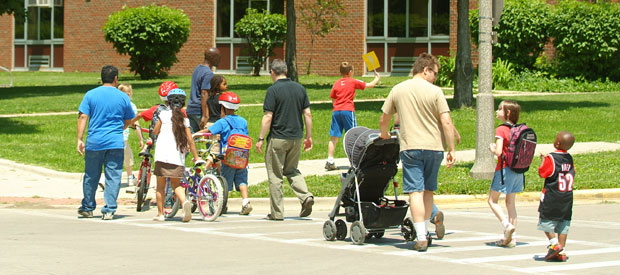
Academic Research Related to Safe Routes to School, Shared Use, and Active Transportation
The Safe Routes Partnership regularly summarizes and updates relevant research in the realm of Safe Routes to School and active transportation. Why do we care about research? Research helps us understand problems and solutions when it comes to Safe Routes to School and active transportation. Research provides the evidence and justification for investing in strategies to support children’s physical, mental, and socio-emotional health, safety, and well-being; demonstrates what’s working – and what might not be working, and shows us that among racial and ethnic groups, across geographic regions, and between rural, urban, and suburban places, experiences walking and bicycling differ, and interventions to increase safe active travel must adapt accordingly. Most importantly, research assists us in understanding the most effective approaches to improving the health and well-being of children and adults.
Research can also help make the case for investing in Safe Routes to School, active transportation, and equity investments to legislators, funders, school officials, local elected leaders, and parents. Research helps us understand the scope and impact of our core issue areas on larger related societal issues like healthy weight, physical activity, academic achievement, traffic congestion, and community design.
Our research section is divided into topical subsections that investigate relationships between Safe Routes to School and active transportation and:
- Equity
- Physical activity and health
- Academic performance and attendance
- How people travel and what affects their travel decisions (Mode share and travel behavior)
- Safety for walking and bicycling
The effects of active transportation on air quality and the environment. Each section starts with a brief overview of key conclusions and a list of research highlights. Synopses of articles of interest follow, including key points, methodology, implications for practitioners, and a link to the full article (sometimes behind a paywall).
A note about language and terminology (updated January 2024): In each article summary, we adopt the same terminology used by the researcher to describe communities, gender, income, age, health, and ability. Some of these terms may not be reflective of how we, as an organization, would typically describe people or communities. However, in our recommendations for practitioners listed in the “Implications” section of each article, we use terms that we intentionally selected to be inclusive and respectful. We encourage you to note these language differences as you craft your own messaging.
The Safe Routes Partnership has identified areas which additional research is needed and a variety of specific research questions. Continuing to expand the research base for Safe Routes to School will allow for a more robust and scholarly analysis of promising trends and best practices. We welcome opportunities to brainstorm or collaborate with researchers in designing studies that delve into these or other related topics.
If you have academic studies to share for potential inclusion in this research compilation, or would like to share a research idea or opportunity for collaboration, please contact marisa@saferoutespartnership.org.
